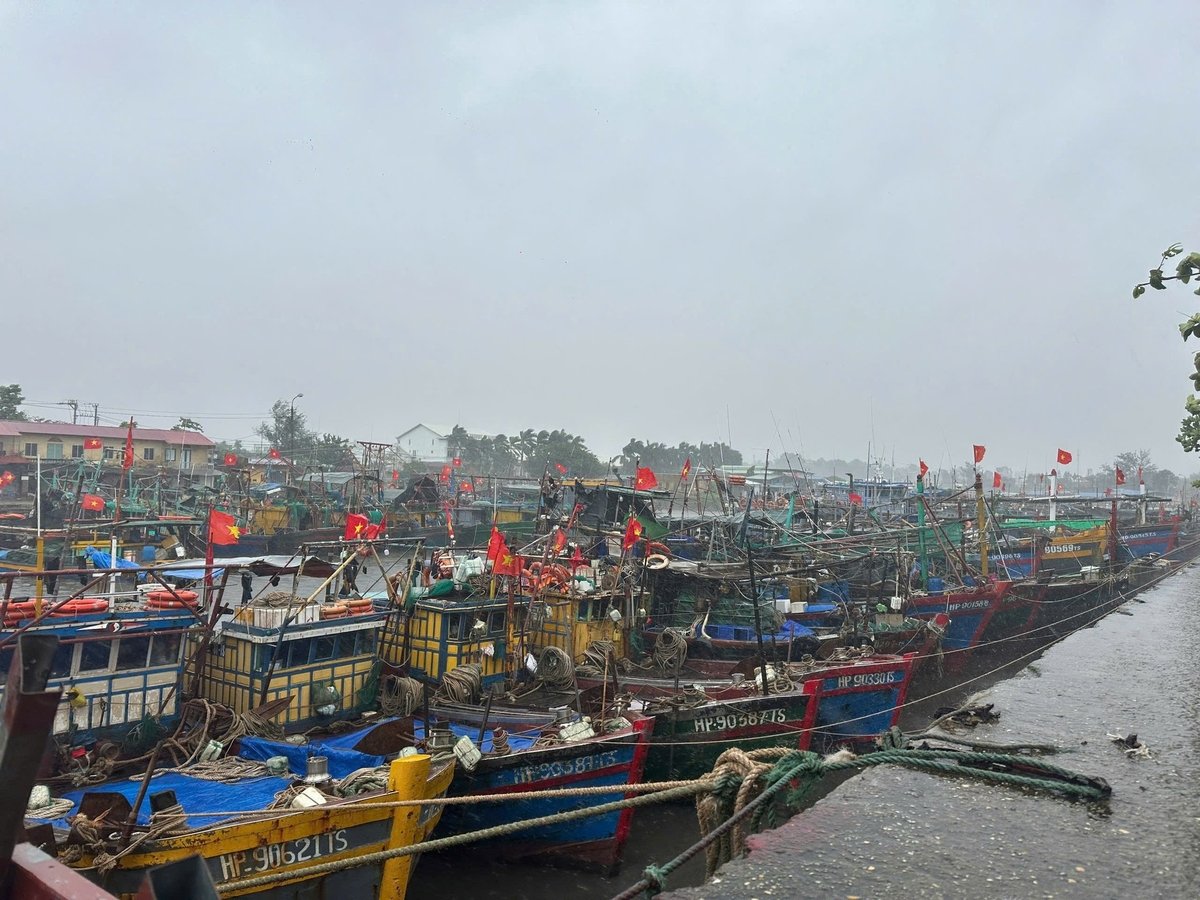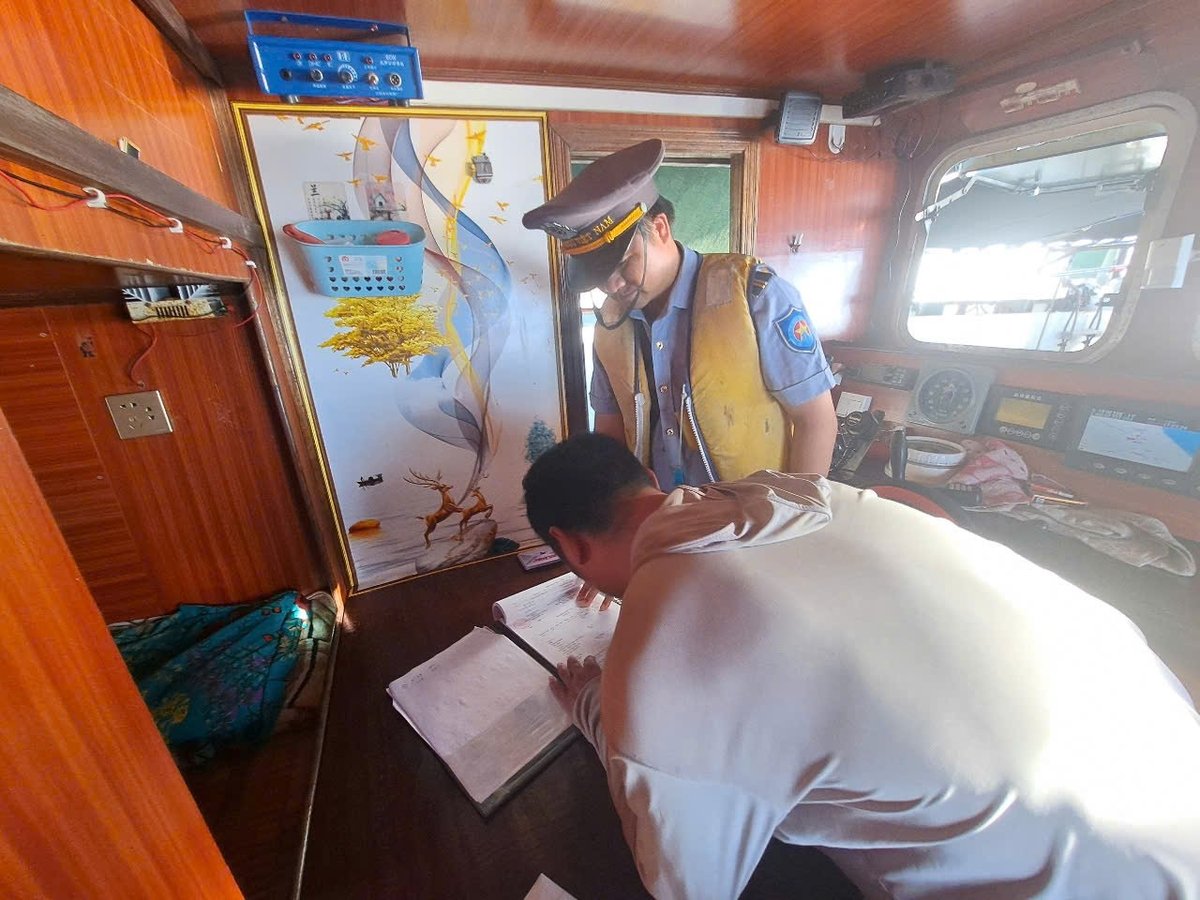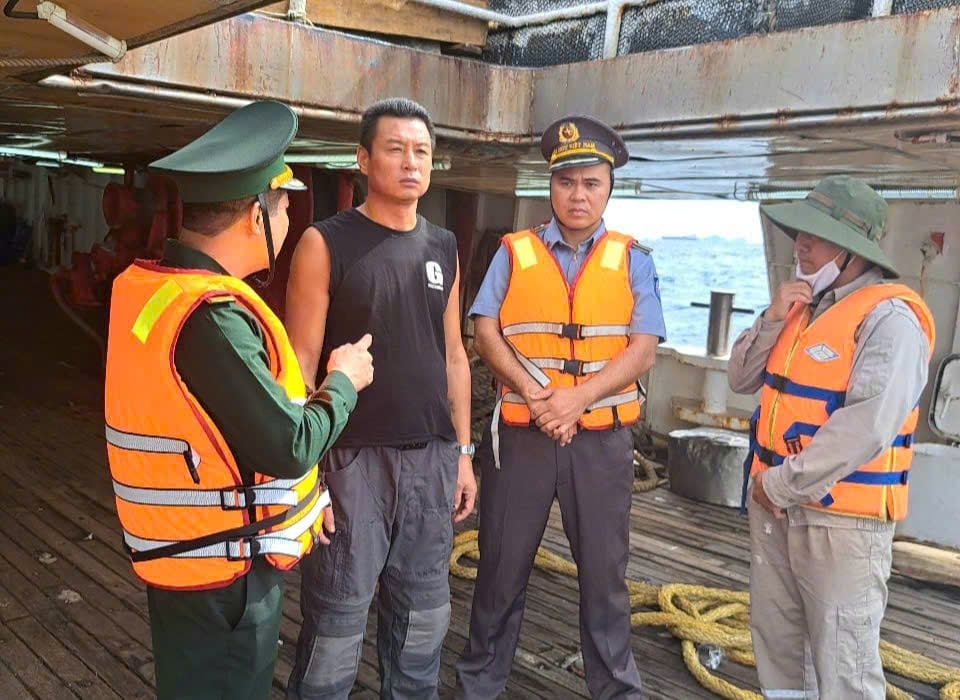December 31, 2025 | 10:58 GMT +7
December 31, 2025 | 10:58 GMT +7
Hotline: 0913.378.918
December 31, 2025 | 10:58 GMT +7
Hotline: 0913.378.918
The Hai Phong People's Committee issued a series of urgent directives in anticipation of the EC's fifth inspection, following Directive No. 32 from the Party Secretariat and Resolution No. 52 from the Government. In contrast to previous general appeals, these instructions specifically addressed specific issues and assigned clear responsibilities to individual departments and local authorities, including the Department of Agriculture and Environment, the Border Guard, and the People's Committees of coastal districts.

By the end of June 2025, Hai Phong had 844 fishing vessels with the largest length of 6m or more updated on the VnFishbase system. Photo: Dinh Muoi.
According to the Hai Phong Department of Agriculture and Environment, the long-standing bottleneck of “three-no” fishing boats (unregistered, uninspected, and unlicensed) has now been removed. The national VnFishbase system has officially listed all boats that fall under Decision No. 2326, as they have concluded the necessary procedures. Bringing unregulated boats under legal control is a significant milestone, and this represents a significant advance in fisheries management.
In addition, management of the 844-vessel fleet has become more orderly. The licensing rate has reached 99.03%, the inspection rate is 96.5%, and all 292 vessels that are required to install Vessel Monitoring Systems (VMS) have complied. In the initial four months of 2025, 60 boats were unable to establish a connection; however, 98.3% of these incidents were investigated and resolved by the authorities.
At designated ports such as Ngoc Hai, Tran Chau, and Bach Long Vi, control measures have been tightened. All boats that arrive or depart now submit their activities. The introduction of the Electronic Catch Documentation and Traceability (eCDT) has seen over 700 vessel submissions in Q1/2025, signaling Hai Phong’s steady progress toward digitalization and transparency.

Fisheries surveillance forces inspect and handle violations of fishing vessels in the Gulf of Tonkin. Photo: Dinh Muoi.
More importantly, fishermen's awareness has substantially increased. Logging catch data and keeping VMS devices on 24/7 is becoming routine. Additionally, enforcement has been enhanced, as evidenced by the hundreds of millions of dong in penalties issued and the resolution of dozens of violations during the first half of the year. Failure to maintain logbooks, fishing in unauthorized zones, and possession of electric shock devices were among the offenses.
Additionally, there have been no instances of Hai Phong vessels violating foreign waters in recent months. This is the outcome of effective communication and law enforcement, which has assisted fishermen in remaining within Vietnamese fishing grounds and has safeguarded them from legal repercussions at sea.
The Department of Agriculture and Environment recognizes that despite the positive results, persistent obstacles necessitate more robust enforcement actions.
The most pressing issue is traceability. Unloading seafood at monitored ports continues to be less than 10% of the overall catch. This is primarily the result of fishermen, particularly those who operate small boats, habitually docking at informal, self-established wharves near their homes or transferring catches at sea to save time and costs. Other compliance initiatives fail to meet EC standards in the absence of verifiable origin.

Fisheries surveillance forces and Border Guards disseminate laws to fishermen. Photo: Dinh Muoi.
The absence of institutional and human resources at the local level is another significant concern. Although local IUU task forces have been formed, many operate ineffectively due to understaffing, lack of expertise, and members having concurrent roles. Assigning complex duties such as managing fishing fleets, tallying catch volumes, and verifying VMS violations to commune- or ward-level authorities without dedicated staff, budget, or equipment makes implementation ineffective.
Additionally, infrastructure and policy obstacles continue to exist. The previous support programs, such as Decree 67 and Decision 48, which provided financial assistance and life-saving equipment, have expired. New policies are now required to assist fishermen in the transition to eco-friendly fishing methods, reduce diesel costs, and maintain VMS devices.
At the same time, many fishing ports have deteriorated, with silted channels discouraging fishermen from using designated ports. This complicates monitoring efforts by directing them to alternative landing points due to inconvenient access. As previously intended, it is imperative to prioritize the construction of a dynamic fishing port at Hai Phong's Major Fishing Center and the upgrading of Bach Long Vi port.
Finally, it is imperative to resolve technological concerns and enforcement capacity. Service providers must resolve all technical errors and feeble signals that result in VMS disconnection. Fisheries surveillance forces—who face dangers at sea and directly handle violations - require adequate compensation and support to ensure long-term commitment.
In summary, lifting the IUU “yellow card” involves much more than installing VMS systems or painting registration numbers on boats. It necessitates a fundamental shift in management philosophy and the complete restructuring of the fishing industry. Hai Phong has made commendable initial progress; however, in order to achieve the finish line, the city must invest in infrastructure, establish robust local institutions and workforce, and provide compelling policy incentives to encourage fishermen to embrace change. Only then can Vietnam’s seafood industry be considered truly sustainable and responsible.
Hai Phong had 844 fishing vessels registered in the VnFishbase system, each of which had a maximum length of 6 meters or more, as of the end of June 2025. Of these, 393 vessels are 6–12m long; 159 are 12–15m; and 292 are over 15m. By fishing method: 97 are trawlers, 268 gillnetters, 45 longliners, 140 purse seiners, 99 logistical support vessels, and 195 are classified under other categories.
Translated by Linh Linh
/2025/12/29/0829-2-000508_274.jpg)
(VAN) Hai Phong is tightening management, with 100% of fishing vessels licensed and equipped with vessel monitoring systems, joining the national effort to lift the EC's 'yellow card.'
/2025/12/27/2744-1-121716_241.jpg)
(VAN) The Viet Nam Environment Protection Fund is the national environment protection fund and a state financial institution under the Ministry of Agriculture and Environment.
/2025/12/27/2015-2-111213_813.jpg)
(VAN) In efforts to realize the goal of Net Zero emissions, reducing urban emissions is regarded as a key solution.

(VAN) Deputy Prime Minister Tran Hong Ha requested to design the EPR mechanism toward a circular economy that is transparent, feasible, and non-administrative and aligned with actual recycling capacity.

(VAN) On December 24, Deputy Prime Minister Tran Hong Ha chaired a meeting about approving greenhouse gas emission quotas for 2025 - 2026 period.

(VAN) As Viet Nam enters a new era, the national agricultural sector must proactively adapt to global trends to transform current challenges into strategic development opportunities.
/2025/12/18/5046-3-154320_307.jpg)
(VAN) Granting planting area codes is a solution that helps Lao Cai manage forests effectively while also laying a data foundation to support the development of the carbon credit market in the future.